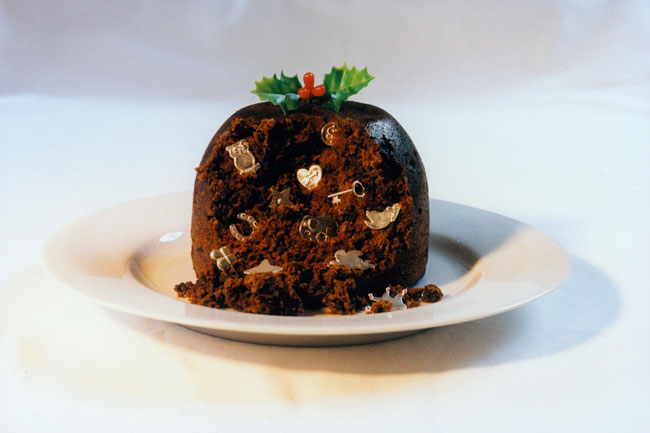
I first came across pudding charms whilst browsing through an English antiques market. I bought two tiny silver Victorian charms, one a wedding ring and the other a bachelor's button.
My research into the tradition of Christmas pudding charms of favours as they are also known began. Some people remember pudding dolls, once common in the 1850s to the early 1900s, particularly in Germany where they were made from scraps of larger porcelain dolls. These little dolls were hand moulded and lovingly painted for putting in Christmas puddings or crackers.
Silver charms were also very popular in the past, the tradtional shapes being a boot, bell, wishbone, thimble, ring, button and horseshoe.

